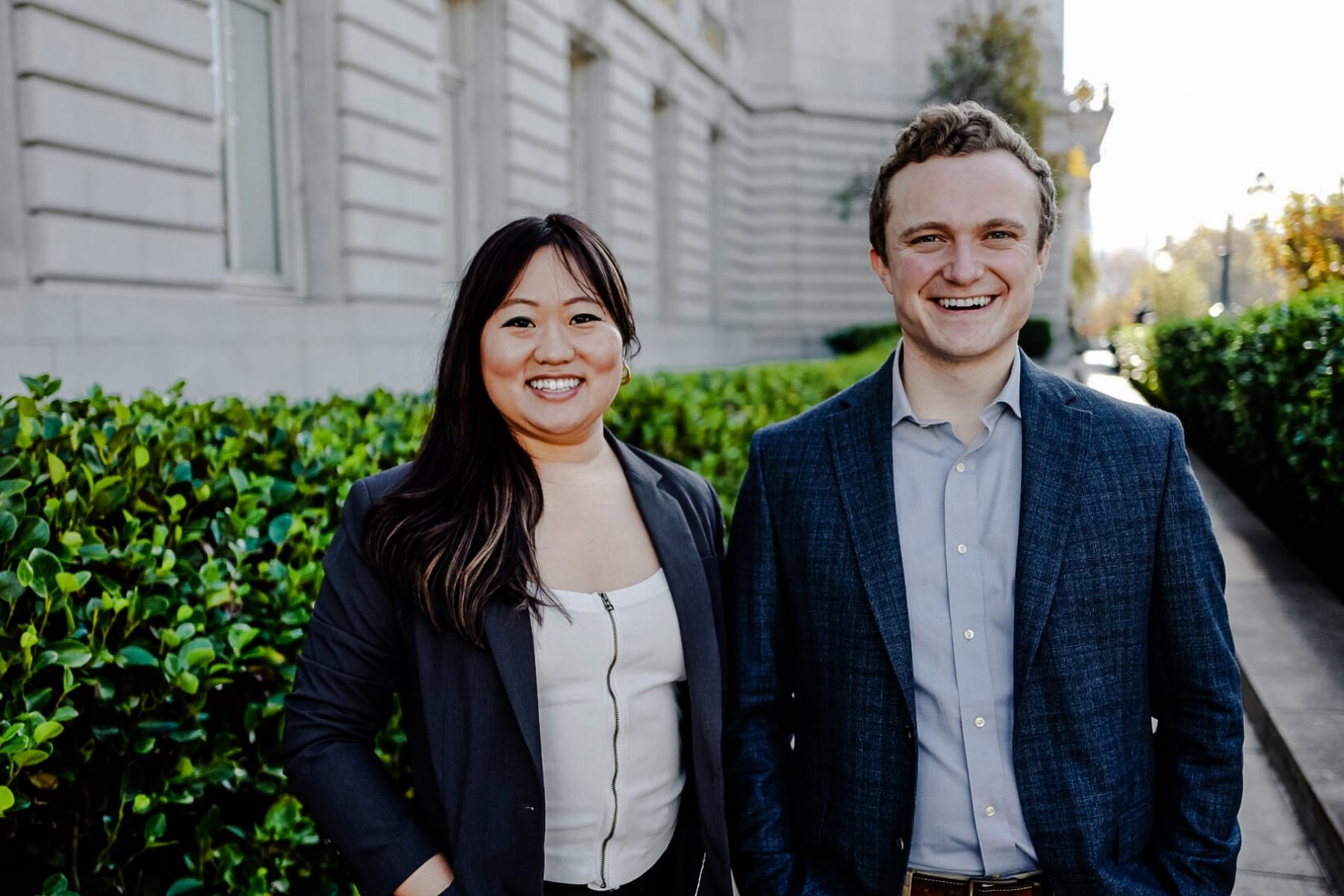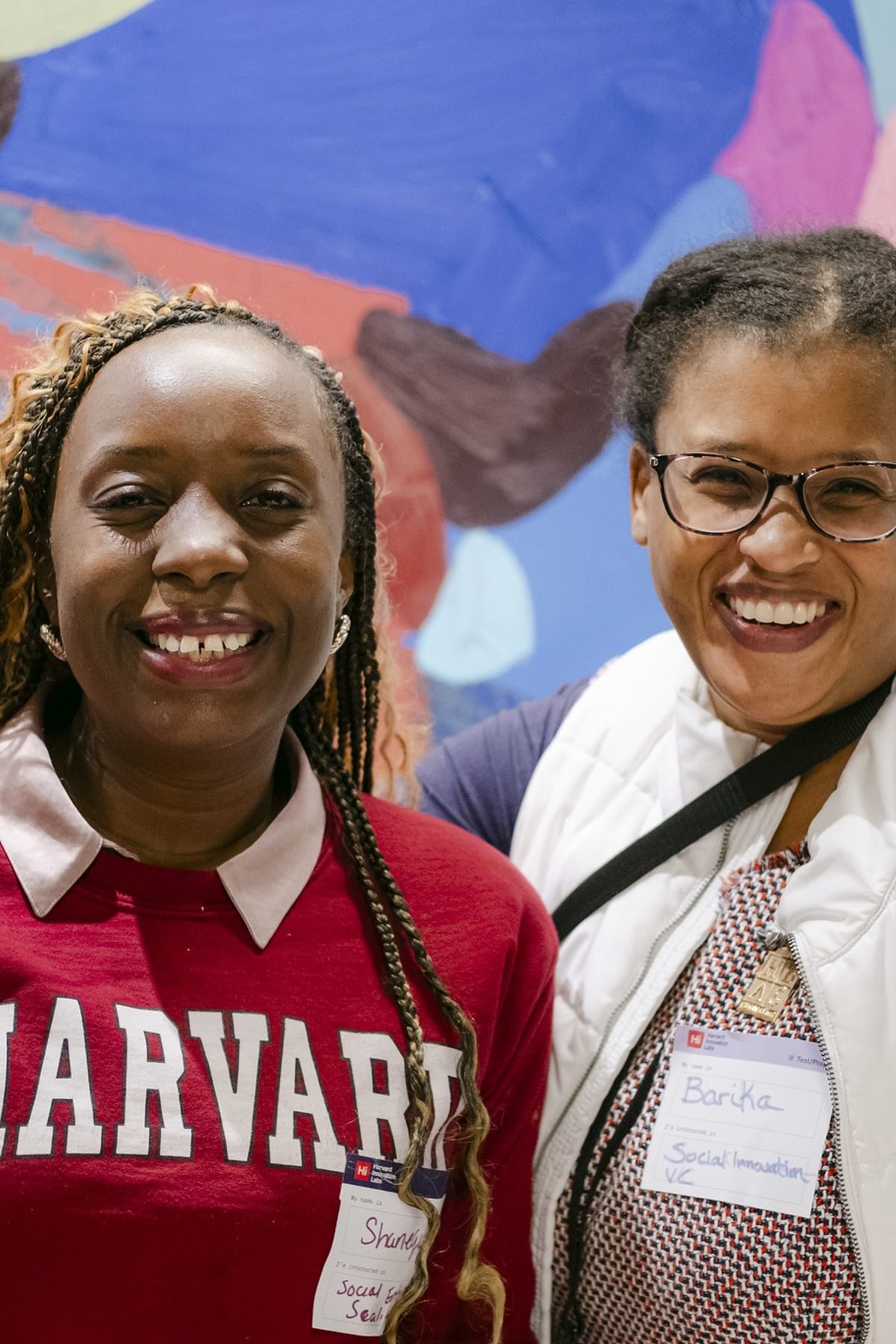When Madhav Datt (HBS ’25) studied computer science and engineering as an undergrad at the Institute of Technology in Kharagpur, a city in the eastern part of India, he saw a lot of people lose their homes due to extreme weather. Datt was already leading a climate tech nonprofit, but seeing so many people become homeless because of cyclones and flooding made him start thinking more about solutions to forcible displacement.
One day, Datt visited the dorm room of his friend, Kaushal Shetty, who volunteered at the same nonprofit. An architecture student, Shetty was working on a new approach to helping the forcibly displaced.
“Everywhere you looked, his desk and floor, there were architectural drawings and models,” remembers Datt. Shetty was designing a better emergency shelter, which he had been thinking about long before moving to Kharagpur. Shetty grew up in Madi, a small village in India where people would often seek out temporary shelter after losing their homes to flooding. Datt and Shetty were also well aware of the global scale of forcible displacement for a range of reasons, from natural disasters to violence. According to the European Commission, more than 120 million people globally are currently forcibly displaced.
Datt and Shetty discussed designing a shelter kit that could be easily shipped and stored next to people’s existing homes. If a natural disaster occurred that caused people to lose their homes, they could build the emergency shelter where they lived. According to Datt, this would let them “find work without having to move too far away, send their kids back to school, and continue their lives.”
Soon after their initial conversation in Shetty’s dorm room, they began working on a volunteer-run nonprofit with the goal of building housing for the forcibly displaced: Nostos Homes.
Balancing affordability, portability, and constructability
For Nostos Homes’ initial shelter design, Datt and Shetty had a clear idea of building specifications: They needed the home to be wind and fire resistant, waterproof or raised to deal with flood water, and insulated. Additionally, it had to be easily transportable and constructable without any “specialized tools, training, or electricity.”
After producing a series of CAD drawings, they believed they had a design that met all of their criteria. But when it came to manufacturing, they discovered that much of what they wanted to create was either impossible or too expensive to produce. Datt recalled a discussion he had with a manufacturer about a joint, where the manufacturer explained, “This joint you designed probably can’t be built, but even if we could build it, there wouldn’t be a way to package up a joint like this to ship.”
This initial feedback did not dissuade Datt and Shetty. “We started taking the manufacturers’ feedback, and then went back into our design, and then went back to the manufacturers,” Datt shared. “It was a cycle of iteration.”
For the next year, Datt and Shetty went through a range of revisions with the aim of “making sure that every dollar we spend towards these homes can really go as far as possible.”



From deploying their first unit to scaling partnerships
Nostos built its first prototype in the manufacturing facility so they could fix any issues "right there on the spot.” They then ordered three more units, and shipped them to the village that Shetty grew up in.
Datt and Shetty proceeded to meet with families and see them following the instructions in the emergency shelter kits as they erected them by themselves. Datt remembers a lot of excitement: “There was a sense of energy that came from them being able to take ownership over their housing. They didn’t have to depend on finding refuge or move into a temporary shelter. Instead, they could build out these homes from Nostos and live in them.”
After deploying Nostos Homes’ first emergency shelters, Datt and Shetty wanted to quickly build and provide more homes. To do that, they needed a partner.
Nostos Homes had to build partner relationships from the ground up, and without friendly introductions. Datt shared a story about his cold outreach to Habitat for Humanity in Malawi: “We researched and understood that they are the biggest builders in the area. Our mission and incentives were very aligned.”
Habitat for Humanity saw firsthand the incredible work Nostos Homes was doing and quickly agreed to partner with them. The organization introduced Nostos Homes to the government of Malawi, which led to an additional partnership.
In explaining what made these partnerships possible, Datt stressed the importance of having a successful product deployment of four units, saying, “It's one thing to talk about an idea and a concept with these design drawings. It's another thing to be able to say, okay, here are houses. They are on the ground. You can go and see them."

Coming to Harvard
Datt applied for and was accepted into Harvard Business School through the 2+2 Program. He described his experience at HBS as “an incredible layer of acceleration on my education.”
“Learning from other people from such diverse industries, backgrounds, ideas, and accomplished careers has been very rewarding.” Madhav Datt on his experience at Harvard Business School
Soon after starting at HBS, Datt became a member of the Harvard Innovation Labs. In addition to participating in workshops and advising sessions, Datt has also received nondilutive grant funding for Nostos Homes from the Harvard Innovation Labs’ Social Impact Fellowship Fund, which Datt said has been “incredibly helpful in terms of scaling Nostos Homes’ impact.”
Pursuing revenue and capital for sustainable growth
Over the last few years, Nostos Homes’ emergency shelters have provided thousands of people across Malawi and Assam with more than 400,000 nights of shelter. This incredible growth has been made possible through grants and philanthropic funding, from organizations such as Mastercard, construction software company COINS, and law firm Mishcon de Reya.
As Nostos Homes plans to have a “deeper impact” in the regions where it operates, Datt is focused on identifying ways the organization can be more “self-sufficient” through revenue-generating opportunities as well as multi-year partnerships with government agencies and philanthropists.
“Building these shelters is not only about providing a roof over somebody's head — for us, it goes much beyond that,” said Datt. “It's about helping people rebuild their lives with a sense of security and dignity.”





